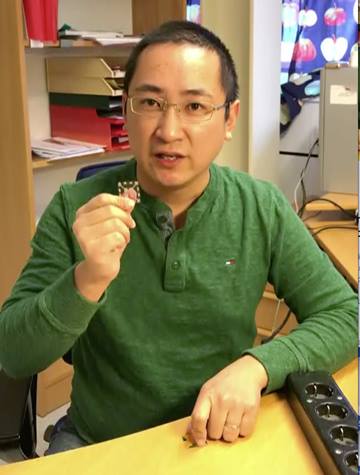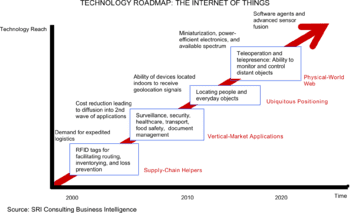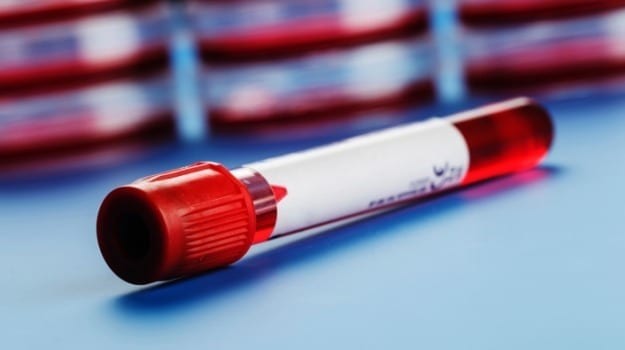
Organic light-emitting devices and printed electronics can be connected to a socket in the wall by way of a small, inexpensive organic converter, developed in a collaboration between Linköping University and Umeå University.
Printed electronics and organic light-emitting devices now perform at levels sufficient for a number of eco-friendly, energy-efficient applications. Previously the idea has been to drive the organic electronics using solar cells, batteries or wireless transformers, which works well in many cases. But for fixed installations like lighting, signage or UV-blocking windows, it is convenient to use a wall socket. Until now this has not been possible, because the high voltage damages the electronics.
Thin-film transistors
Docent Deyu Tu from LiU’s Division of Information Coding has led a project where colleagues at Umeå University joined forces to find a solution to this problem. And they have now been able to demonstrate an organic converter that makes it possible to drive organic light-emitting devices with high luminescence, and to charge supercapacitors, both using electricity from an ordinary wall socket.
The converter consists of diode-connected organic thin-film transistors, operated at high voltages up to 325 V, with the capacity to transform high alternating current (AC) to a selected direct current (DC).
“For the first time in the world we have been able to demonstrate an AC/DC converter in organic electronics that functions at voltages above 300 V,” says Deyu Tu.
“Our converter paves the way for a wave of flexible, thin, cost-effective and eco-friendly solutions for the electronics of the future.”
A pioneer work
This is a pioneer work of organic AC/DC converters, a first stage to prove the concept of organic power electronics. To be used in real products, the power conversion efficiency needs to be improved.
”We have initiated the follow-up work to deal with this issue”, says Deyu Tu.
Learn more: Organic electronics can use power from socket
[osd_subscribe categories=’organic-electronics’ placeholder=’Email Address’ button_text=’Subscribe Now for any new posts on the topic “ORGANIC ELECTRONICS”‘]
Receive an email update when we add a new ORGANIC ELECTRONICS article.
The Latest on: Organic electronics
[google_news title=”” keyword=”organic electronics” num_posts=”10″ blurb_length=”0″ show_thumb=”left”]
via Google News
The Latest on: Organic electronics
- Swedish startup wins EU funding to print organic indoor solar panelson May 7, 2024 at 7:55 am
Epishine's organic solar panels harness indoor light to power electronics and Internet of Things (IoT) devices.
- Researchers create 2D all-organic perovskites, demonstrate potential use in 2D electronicson May 6, 2024 at 6:49 am
Perovskites are among the most researched topics in materials science. Recently, a research team from The Hong Kong Polytechnic University (PolyU) has solved an age-old challenge to synthesize ...
- PolyU researchers create 2D all-organic perovskites and demonstrate potential use in 2D electronicson May 5, 2024 at 8:47 pm
Perovskites are among the most researched topics in materials science. Recently, a research team led by Prof. LOH Kian Ping, Chair Professor of Materials Physics and Chemistry and Global STEM ...
- Flexible Electronics Market To Reach USD 59.9 Billion By 2032, Says DataHorizzon Researchon May 3, 2024 at 12:00 am
Integrating flexible electronics with advanced automotive technologies is poised to revolutionize automobile manufacturing, offering enhanced flexibility and functionality in vehicle design and ...
- Organic electrochemical transistors: Scientists solve chemical mystery at the interface of biology and technologyon April 30, 2024 at 11:22 am
Researchers who want to bridge the divide between biology and technology spend a lot of time thinking about translating between the two different "languages" of those realms.
- Conjugated Polymers for Organic Electronicson March 27, 2024 at 5:01 pm
Get access to the full version of this content by using one of the access options below. (Log in options will check for institutional or personal access. Content may require purchase if you do not ...
- A new dawn for flexible electronics: Eliminating energy wasteon March 25, 2024 at 1:38 pm
Lei Zhang, a lead researcher on the project, stated, "This breakthrough not only challenges the existing limitations faced by organic electronics but also opens up new pathways for the development ...
- An alternate arrangement: How a propeller-shaped isomer can improve organic solar cellson February 27, 2024 at 7:45 am
Enhancements in OSCs can exert a widespread impact on the renewable energy landscape and may extend to other realms of technology reliant on organic electronics. More information: Hao Liu et al, ...
- Organic electronicson November 9, 2018 at 12:23 pm
The establishment of high-tech products relying on organic semiconductors demonstrates the remarkable technological maturity and competitiveness of these materials. This focus issue explores the ...
via Bing News










